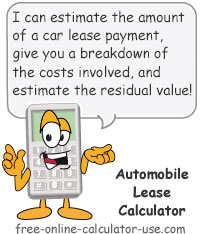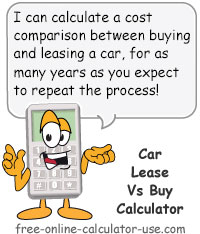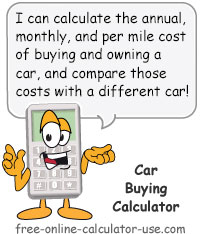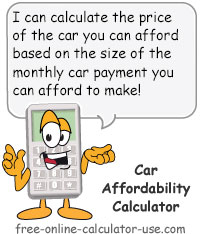IMPORTANT: Numeric entry fields must not contain dollar signs, percent signs, commas, spaces, etc. (only digits 0-9 and decimal points are allowed).
Click the Terms tab above for a more detailed description of each entry.
Step #1:
Enter the MSRP.
Step #2:
Enter the final negotiated price of the car.
Step #3:
Enter the total of any additional lease fees that you won't pay upfront (acquisition fees, extended warranty, etc.).
Step #4:
Enter the down payment amount, if applicable.
Step #5:
If you are trading in a vehicle, enter the trade-in credit you will receive.
Step #6:
Enter the sales tax rate that will apply to the lease.
Step #7:
Enter the term of the lease in the number of months.
Step #8:
Enter either the Money Factor or the APR, whichever is known.
Step #9:
Enter either the depreciation percentage or the estimated residual value, whichever is known.
Step #10:
Click the "Calculate Lease Payment" button and scroll down to see the results.





Follow me on any of the social media sites below and be among the first to get a sneak peek at the newest and coolest calculators that are being added or updated each month.